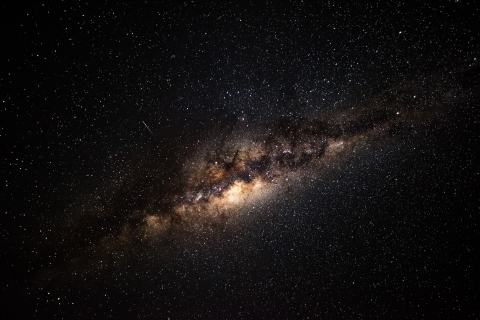

A team of international scientists have reconstructed gravity to find a more robust way of understanding the cosmos
4 November 2022
7
Scientists from around the world have reconstructed the laws of gravity, to help get a more precise picture of the Universe and its constitution.
The standard model of cosmology is based on General Relativity, which describes gravity as the curving or warping of space and time. While the Einstein equations have been proven to work very well in our solar system, they had not been observationally confirmed to work over the entire Universe.
An international team of cosmologists, including scientists from the University of Portsmouth in England, has now been able to test Einstein's theory of gravity in the outer-reaches of space.
They did this by examining new observational data from space and ground-based telescopes that measure the expansion of the Universe, as well as the shapes and the distribution of distant galaxies.
The study, published in Nature Astronomy, explored whether modifying General Relativity could help resolve some of the open problems faced by the standard model of cosmology.
We altered the relationship between matter and spacetime, and studied how well we can constrain deviations from the prediction of General Relativity
Professor Kazuya Koyama, Institute of Cosmology and Gravitation at the University of Portsmouth
“Different measurements of the rate of cosmic expansion give us different answers, also known as the Hubble tension. To try and combat this, we altered the relationship between matter and spacetime, and studied how well we can constrain deviations from the prediction of General Relativity. The results were promising, but we’re still a long way off a solution.”
Possible modifications to the General Relativity equation are encased in three phenomenological functions describing the expansion of the Universe, the effects of gravity on light, and the effects on matter. Using a statistical method known as the Bayesian inference, the team reconstructed the three functions simultaneously for the first time.
“Partial reconstructions of these functions have been done in the last 5 to 10 years, but we didn't have enough data to accurately reconstruct all three at the same time”, added Professor Koyama.
“What we found was that current observations are getting good enough to get a limit on deviations from General Relativity. But at the same time, we find it's very difficult to solve this problem we have in the standard model even by extending our theory of gravity.
“One exciting prospect is that in a few years’ time we’ll have a lot more data from new probes. This means that we will be able to continue improving the limits on modifications to General Relativity using these statistical methods.”
As the era of precision cosmology is unfolding, we are on the brink of learning about gravity on cosmological scales with high precision
Professor Levon Pogosian, Simon Fraser University in Canada
Up and coming missions will deliver a highly accurate 3D map of the clustered matter in the Universe, which cosmologists call large scale structure. These will offer an unprecedented insight into gravity at large distances.
Professor Levon Pogosian, from Simon Fraser University in Canada, said: “As the era of precision cosmology is unfolding, we are on the brink of learning about gravity on cosmological scales with high precision. Current data already draws an interesting picture, which, if confirmed with higher constraining power, could pave the way to resolving some of the open challenges in cosmology."
